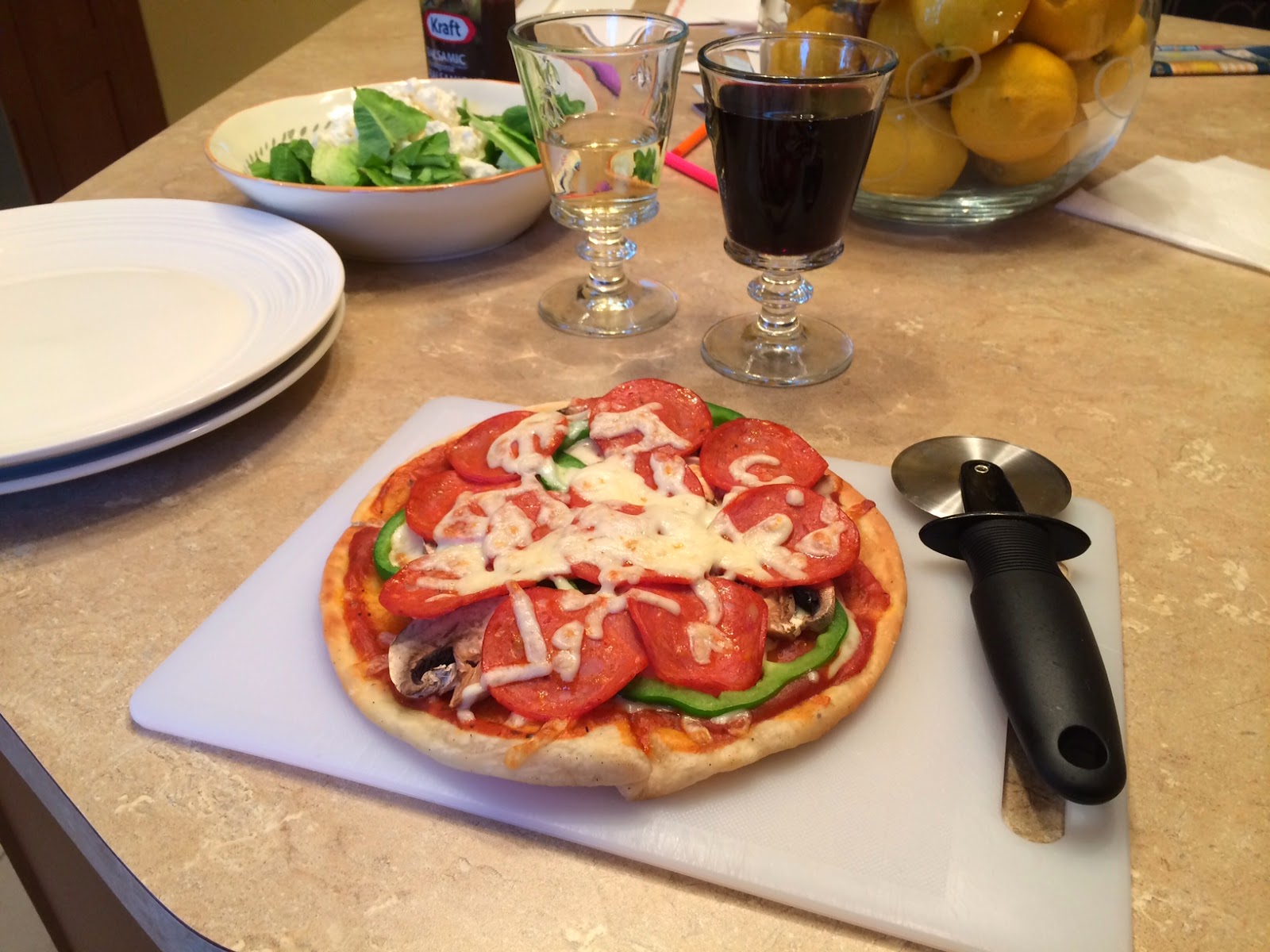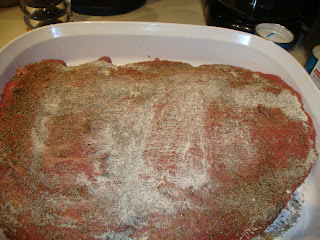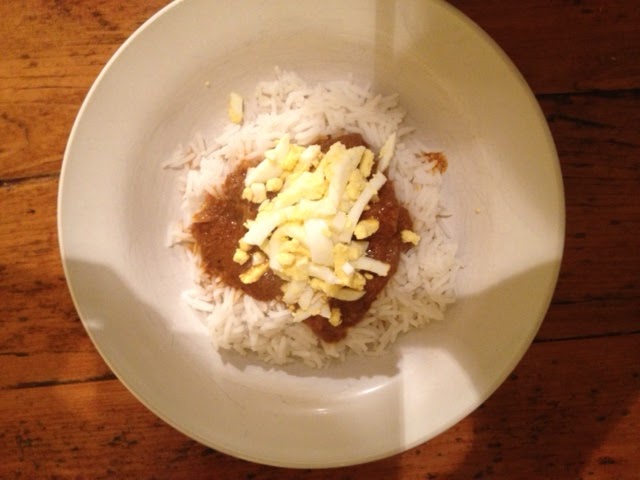Michelangelo, Donatello, Leonardo and Raphael!!!! Classic,
world-renowned artists or crime-fighting, sewer dwelling, mutant turtles with
the vocabulary and appetite of teenagers?!? Like, whoa man! Did you know that
the Turtles I grew up with are back with a serious vengeance!!! They are even
popular at the Lego(TM) Store (please don't ask how I know that!).
These human sized turtles, with impressive karate skills (not
quite as good as Sarah's, my pint-sized niece), may be fictional comic book
characters, but their love of pizza is real. And, frankly, so is mine. What
better inspiration does one need to make pizza, then the nostalgic comics of
these pizza-loving heroes of my childhood? I certainly remember waking up on
Saturday to watch these wacky characters fight off the evil ninjutsu master,
Shredder, with the help of the stoic, over-sized rat sensai, Splinter.
The turtles had more adventures than I can count, but always,
without a doubt, pizza was had. No. Matter. What.
So now would be good time to make my mother-in-law's recipe for
pan-fried pizza. Seriously, could pizza get any better??!! But shall we discuss
the history of pizza for a minute before diving in? Well, if you insist....
Well, we all know pizza is an oven-baked, flat, often round,
bread typically topped with sauce, cheese and various toppings. The modern
pizza that we are all familiar with was invented in Naples, Italy and has
become incredibly popular throughout the world.
A popular urban legend holds that the archetypal pizza, Pizza Margherita,
was invented in 1889, when the Royal Palace of Capodimonte commissioned the
Neapolitan pizzaolo Raffaelo Espoisto (ahem...sounds like TMNT) to create a
pizza in honour of the visiting Queen Margherita. Of the three pizzas he
created, the Queen preferred a pie swathed in the colours of the Italian flag:
red (tomato), green (basil), and white (mozzarella). Supposedly this type of
pizza was then named after the Queen as Pizza Margherita. But sadly, recent
research on the topic casts doubt on this legend. Too bad...I kinda liked it.
According to the rules proposed by the Associazione Vera Pizza
Napoletana, the genuine Neapolitan pizza dough consists of wheat flour,
natural Neapolitan yeast or brewer's yeast, salt and water. For proper results,
strong flour with high protein content (the flour used for bread-making rather
than cakes) must be used. There are three official variants of the pizza
napoletana: Pizza marinara (made with tomato, garlic, oregano and extra virgin
olive oil); Pizza Margherita (as we know from above, made with slice tomato,
basil and extra virgin olive oil); and Pizza Margherita Extra (made with
tomato, mozzarella from Campania, basil and extra virgin olive oil). The pizza
napoletana is a Traditional Speciality Guaranteed product in Europe.
Lazio style pizza is pizza available in Lazio (Rome), as well as
many other parts of the Italy, which is available in two different styles.
Take-away shops sell pizza rustica or pizza al taglio. This pizza
is cooked in long rectangular baking pans and is relatively thick and usually
sold by weight. In pizzerias, pizza is served in a dish in its traditional
round shape. It has a thin, crisp base quite different from the thicker and
softer Neapolitan style base. In Rome, a pizza napoletana, is topped
with tomato mozzarella and anchovies and oil, thus, what in Naples is called pizza
romana, in Rome is called pizza napoletana.
Interestingly, the largest pizza, according to the Guinness Book
of World Records, was at Norwood Pick 'n Pay in Johannesburg, South Africa in
December 1990. It was 37.4 metres in diameter and was made using 500 kg of
flour, 800 kg of cheese and 900 kg of tomato puree. But, the most expensive
pizza was made by the restauranteur Domenico Crolla, and included toppings such
as sunblush tomato sauce, Scottish smoked salmon, medallions of venison, edible
gold, lobster marinated in the finest cognac and champagne-soaked caviar. The
pizza was auctioned for charity for 2,150 British Pounds.
Okay...enough with the history lesson!!!! Are we ready to have some pizza now??? The
recipe is below. Enjoy!
Ingredients (this is for one pan pizza):
1/2 cup flour
- Salt
- Pepper
- 4-5 Tbsp olive oil
- Your favourite pizza toppings
Directions (for pastry):
Sieve the flour, salt and pepper into a bowl. Make a well in the
middle and pour in 2 tablespoons of olive oil, and 4 tablespoons water. Mix
into a soft, though not sticky, dough. You may find that you have to add a
further tablespoon of water or flour to get the right consistency.
Turn the dough out onto a floured surface and knead lightly. Roll
out the pastry in a round shape to fit the base of a 9-10 inch frying pan.
Heat a tablespoon of olive oil in the pan, place the circle of
dough in the pan and cook over a low heat for about 5 minutes or until the base
is lightly brown.
Have an oiled plate ready and turn the pizza base out onto it.
Heat another tablespoon of oil and slide the pizza base back into the pan and
cook the reverse side for 5 minutes.
During this time, spread the pizza sauce and toppings you enjoy
and cook for a few minutes on top of the stove. Transfer the pan to a
pre-heated oven on the broil setting and cook for 2-3 minutes to melt the
cheese and heat the toppings.
Slide pizza out the pan and enjoy!












.JPG)
.JPG)























